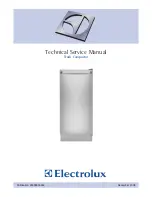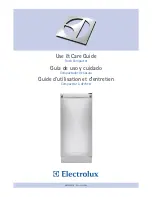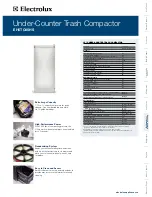
55
5.12.2. Parking brake.
Parking brake adjustment should follow the service brake adjustment.
If correctly adjusted, the parking brake should act securely, when the ratchet pawl is snapped in the
third to fifth recess on the rack, counting from the lowest position.
Adjust the parking brake as follows:
latch the brake pedals,
place the parking brake lever in its lowest position,
slacken the pull rod locknut, each side,
shorten the pull rods by turning the adjusting nuts as far as possible and without interfering the
free travel of the brake pedals,
retighten the lock nuts,
check the brake for correct adjustment. After engaging the parking brake, the air pressure at the
air coupler should drop to atmospheric pressure,
road test the tractor with the brakes latched and check the parking brake for pulling to one side.
Lock the brake pedals together and road test to ensure that the brakes are balanced and will stop the
tractor in a straight line. If the tractor pulls to one side, adjust until the brakes are correctly balanced.
5.13. Air braking system.
Tractor air braking system is used for actuating the trailer air brakes and for tyre inflating. Tractor
system is adapted to control trailer with single or double-line trailer air braking system. It is fitted with
trailer control valve. The system contains of Air compressor (1-Fig. 5.13.2), Pressure regulating valve
(Fig. 5.13.4), Air reservoir (3-Fig. 5.13.1), coupling for connection to trailer air braking system (3 - Fig.
5.13.3).
Air braking system is shown at Fig. 5.13.1.
WARNING:
!
1. Never start towing of a trailer with the air pressure gauge showing
pressure below 0,4
0,04 MPa.
2. Stop towing of a trailer with air braking system if the air pressure warning
light illuminates.
Air compressor
The energy (compressed air) source for trailer air braking system is a piston one cylinder compressor
Ø65 mm bore and 76 cm
3
displacement operate on 800 to 3000 rpm and obtain a capacity of max 85
l/min.
The air compressor is equipped with a special type of valves enabling the pressure to be self-
stabilized. This means that the pressure in the air reservoir is maintained constant due to the
compressor delivery stopping at a definite pressure.
The compressor maintains a pressure ranging between 1.1 and 1.4 MPa in the system, from the
compressor to the pressure regulating valve.
The air compressor is driven by V-belt from the engine crankshaft pulley, operating on 800 to 3000
rpm and obtain a capacity of max 85 l/min.
There is provided a clutch on the air compressor to save energy when drive without trailer.
To disengaging the drive move the lever at the rear of the compressor
(2-Fig. 5.13.2)
.
The compressor is pressure lubricated with the engine oil from the engine lubrication system.
The lamp on instrument panel (17-Fig. 3.1) illuminates when air pressure inside the trailer air
braking system falls below 0,4
0,04 MPa and the pressure gauge (4-Fig. 3.1) informs about the
current in the air container.
Avoid to contact the V-belt to oil and grease.
Renew the belt if it is worn. If contaminated with oil or grease, wash it using water and soap.
Check the air compressor V-belt tension every 150 hours of operation.
Содержание 675
Страница 1: ...Kullanım Kılavuzu Farmtrac 675 675DT ...
Страница 62: ...62 8 WIRING DIAGRAMS FT 675 WIRING DIAGRAM without cab ...







































